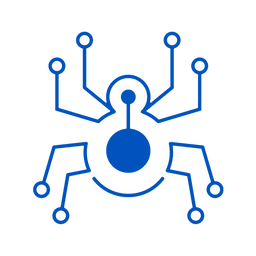Building Cloud Resilience: Lessons for CISOs from Real-World Breaches

The rapid evolution of cloud computing has fundamentally reshaped the IT landscape, offering unprecedented efficiency but also introducing novel and complex security challenges. As organizations increasingly rely on cloud services, understanding and mitigating the associated risks is paramount. The CSA Top Threats Working Group’s "Deep Dive" report offers valuable insights by analyzing real-world cloud security incidents, moving beyond theoretical concerns to explore the practical impacts and contributing factors of recent breaches. This analysis provides critical lessons for CISOs aiming to enhance their organization's cloud resilience.
The report focuses on eight recent, high-profile cloud attacks and breaches, examining their threat models, technical details, business impacts, and the controls and mitigations involved. This approach allows for a deeper understanding of how threats and vulnerabilities manifest in practice. As we've discussed, threats are defined as events or actions by a threat actor that can potentially damage an organization through unauthorized access, destruction, disclosure, modification, or denial of service. Vulnerabilities, on the other hand, are deficiencies in systems, processes, or controls that can be exploited by a threat actor to achieve their objectives. Vulnerabilities typically stem from missing, weak, or misapplied security controls.
The analysis of these incidents reveals recurring patterns and highlights the most prevalent issues observed in breaches, contrasting these findings with concerns identified in surveys. While survey results reflect perceived importance, the Deep Dive case studies show how often issues appear in actual incidents. Based on the case studies, the most frequently observed security threats (Tier 1) included Identity and Access Management (IAM) issues, Misconfiguration and Inadequate Change Control, and Insecure Software Development. IAM vulnerabilities, such as weak access controls, lack of multifactor authentication (MFA), and privilege escalation, frequently enabled unauthorized access. Misconfigurations led to prolonged data exposure due to improperly secured cloud environments, such as publicly accessible S3 buckets.
These findings underscore critical areas requiring CISO attention. The report offers several key takeaways for building greater cloud resilience:
- Assume Misconfigurations and Human Errors Will Occur: Cloud architectures and security strategies must be built with the understanding that misconfigurations and human mistakes are inevitable and will be targeted by threat actors. Organizations need to design defenses that account for these realities.
- Prioritize Strong Identity and Access Management (IAM): IAM is consistently identified as a critical area. CISOs must rigorously enforce strong IAM practices, including multifactor authentication (MFA), the principle of least privilege, and privileged access management (PAM). Excessive privileges, weak authentication, and poor access control policies frequently enable lateral movement and privilege escalation in breaches. Enhanced IAM is crucial for reducing data leak risks. This includes regularly conducting access reviews and audits. It's vital to recognize that simple 2FA alone is insufficient for protecting sensitive accounts; more robust methods like passkeys or hardware security keys are superior to SMS-based options. Least privilege is more than a buzzword; restricting access to the bare minimum is crucial. Technologies like zero standing privileges, Just-in-Time (JIT) access, or Temporary Elevated Access (TEA) can help enforce this.
- Understand and Enforce Shared Responsibility: Cloud providers and users share responsibility for security. While vendors should promote secure defaults and detect abuse, cloud users must actively implement security measures over the data and workloads they place in the cloud. CISOs must ensure their teams understand their specific responsibilities within the shared responsibility model.
- Implement Continuous Monitoring and Real-Time Detection: Many breaches go undetected for extended periods due to insufficient visibility. CISOs must invest in automated monitoring, anomaly detection, and centralized logging (like SIEM) to quickly identify misconfigurations, unauthorized access, and malicious activities. Proactive monitoring is essential to prevent prolonged exposures. Logging and monitoring should cover all cloud environments to promptly detect suspicious activities and misconfigurations.
- Strengthen Supply Chain Security: Threat actors exploit weaknesses in supply chains and third-party integrations. CISOs need to assess vendor security, enforce strict requirements, and continuously monitor dependencies. Understand the risks associated with third-party (and fourth-party) suppliers within the shared responsibility model and take steps to limit exposure. Supply chain partners managing sensitive data must uphold the highest security standards. Contracts may be the only enforceable method for correcting harm created by suppliers; involve legal teams in reviewing implications or drafting language for SLAs and breach of contract.
- Prioritize Proactive Cloud Governance: Weak governance and a lack of consistent review allow security gaps to persist. CISOs should enforce cloud security policies, maintain secure configuration baselines, and conduct regular governance reviews to ensure timely remediation in compliance with regulations. Systemic challenges in governance, like inadequate routine audits, leave sensitive data vulnerable. Automated monitoring and audits can prevent misconfigurations.
- Develop Cloud-Specific Incident Response and Recovery Plans: Traditional incident response plans may not account for cloud complexity. Comprehensive plans tailored to cloud risks are crucial for limiting damage. Regular testing of these plans is vital to ensure rapid detection and response.
- Extend Security Testing Beyond Production: Vulnerabilities in development and testing environments, often with weaker controls, can be exploited. Security controls, including least privilege and monitoring, must be enforced across all cloud environments. Test (non-prod) accounts are not exempt from security policies. Implement processes to detect and delete unused accounts/instances.
- Enforce Secure Configuration Baselines: Baseline configuration and identity security controls (TT1 and TT2) remain effective controls against breaches. Public-facing misconfigurations, especially in cloud storage, are a significant risk. Implement policies to block public access to storage buckets and enable access logging.
- Protect Sensitive Data with Robust Encryption: Sensitive data requires strong encryption at rest and in transit.
- Consider Change Management and Deployment Strategies: Staggered rollouts or critical infrastructure exceptions can be beneficial when deploying updates. While immediate patching is sometimes necessary, quality assurance testing often provides significant benefits.
- Improve Credential Management: Embedding long-term access keys in code is a severe vulnerability. Adopt dynamic credential management systems and regularly rotate access keys.
- Foster Strong Corporate Governance and Internal Controls: These are essential for detecting and mitigating risks. Board-level cybersecurity oversight and independent audits are critical.
- Be Wary of Simple, Dated Attack Methods: Simple attacks like password spraying remain effective even against mature organizations. Adversaries may also use a passive, patient approach to evade detection; detection methods should account for low-frequency, targeted attempts.

In conclusion, the insights from these real-world cloud breaches provide CISOs with a clear mandate. Focusing on foundational controls like strong IAM, secure configurations, continuous monitoring, and robust governance, while also addressing supply chain risks and tailoring incident response to the cloud, are key to enhancing cloud resilience against the top threats identified in this analysis. Continuous improvement requires continuous auditing, security automation, security awareness, and integrating lessons learned. By implementing these actionable takeaways, organizations can significantly strengthen their security posture in the dynamic cloud landscape.






